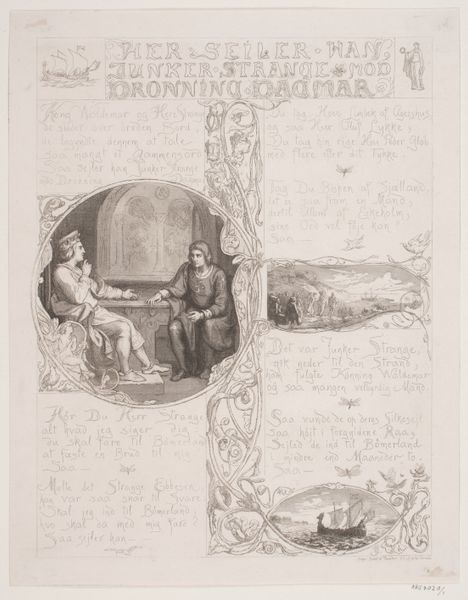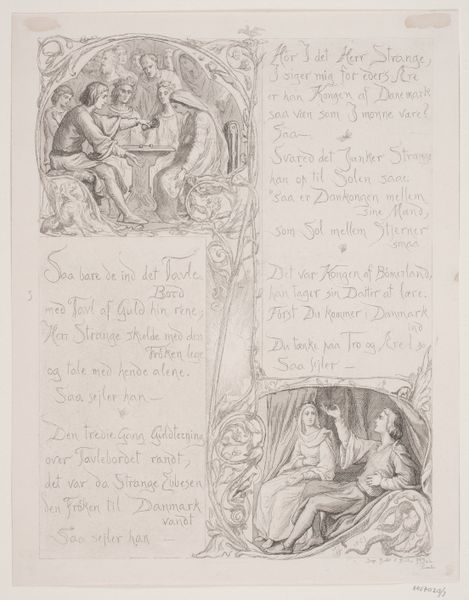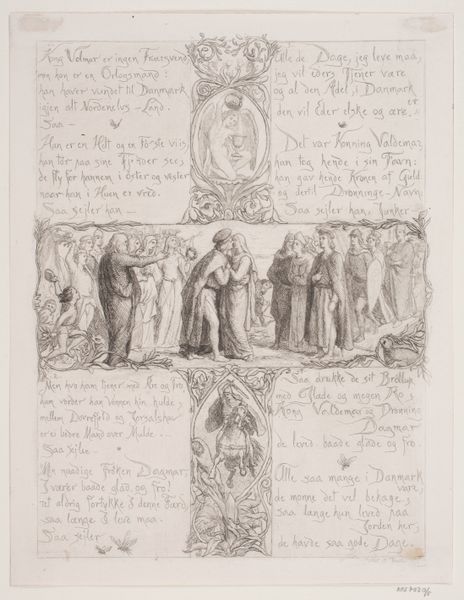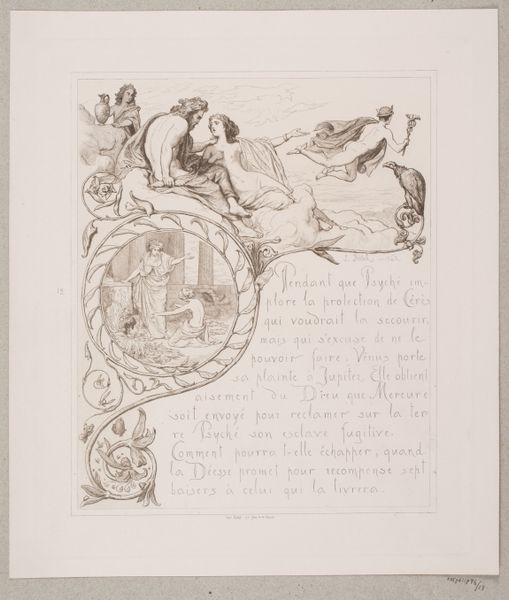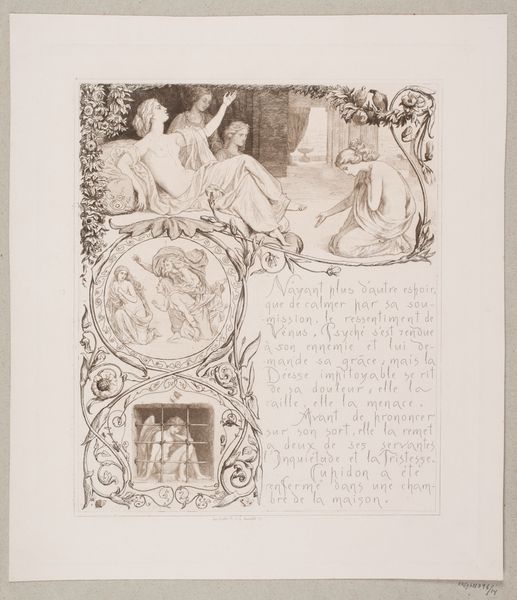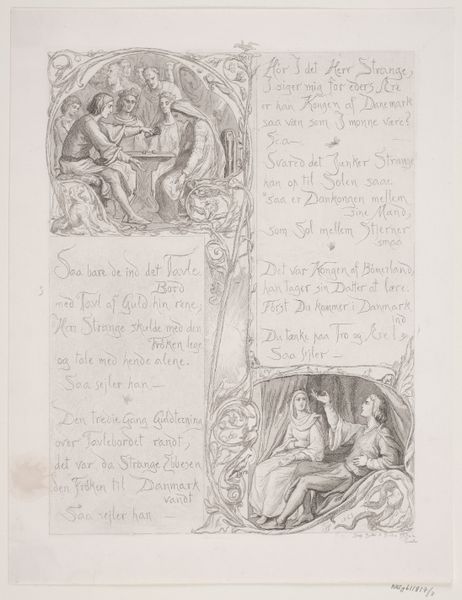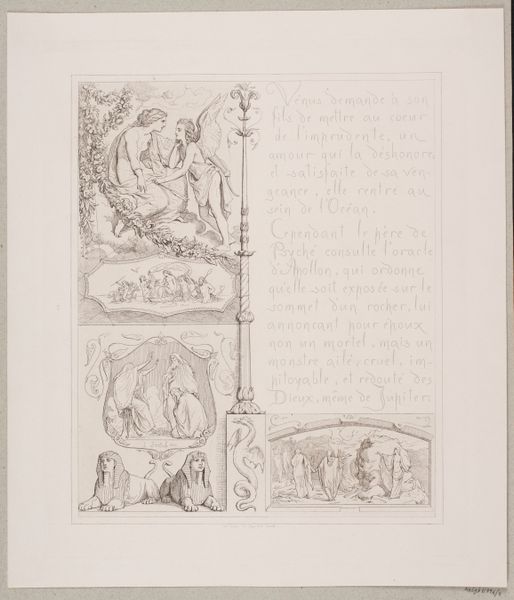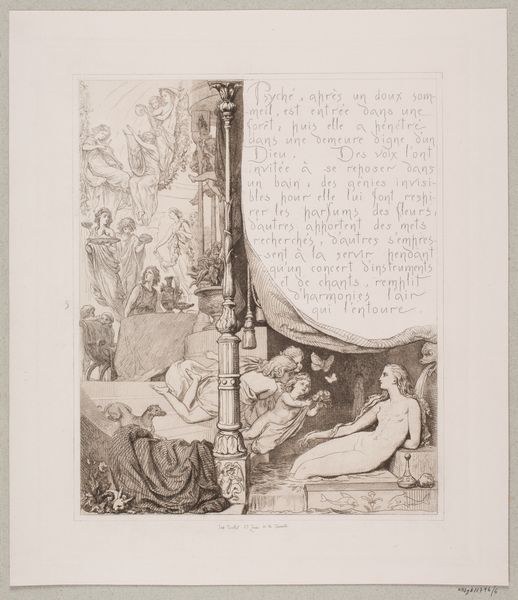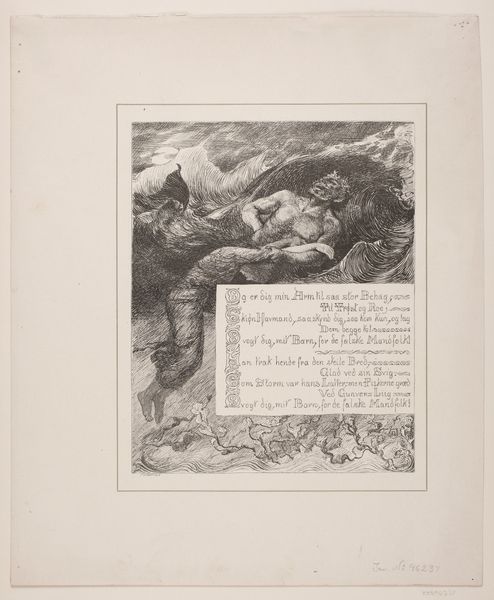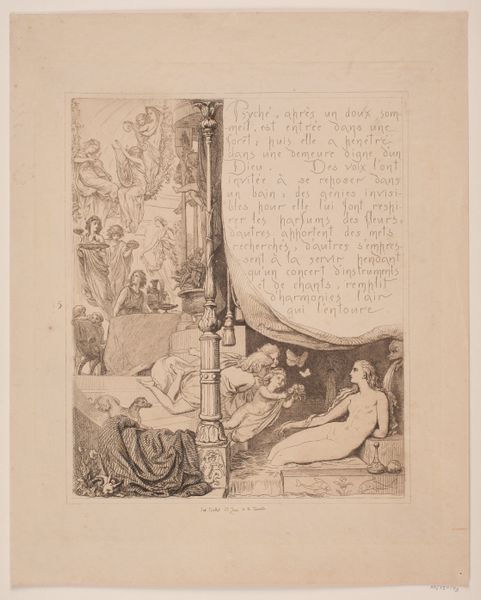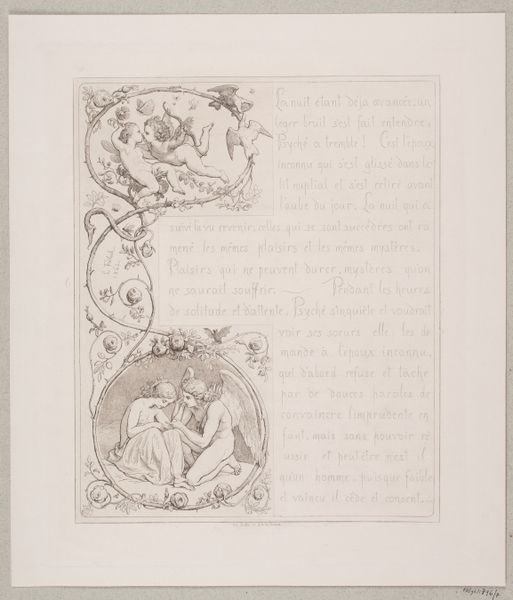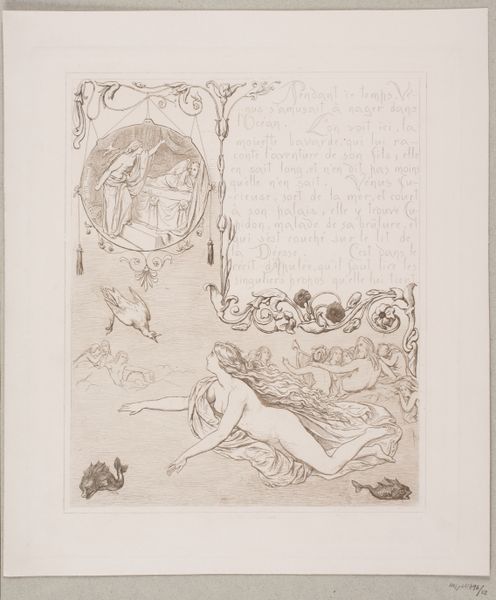
Illustration nr. 1 til "Visen om Dronning Dagmars ankomst til Danmark" 1863
0:00
0:00
Dimensions: 285 mm (height) x 221 mm (width) (bladmaal)
Curator: This delicate piece is "Illustration nr. 1 til "Visen om Dronning Dagmars ankomst til Danmark," created by Lorenz Frølich in 1863. The artwork, housed here at the SMK, appears to be rendered primarily in pencil and engraving, almost like a page torn from a medieval manuscript brought to life. Editor: My first thought? Dreamy. It feels almost faded, like looking at a ghost of a story. The line work is incredibly intricate, a spiderweb of detail. But there’s something melancholy in that subdued palette, don’t you think? Like the echo of a ballad. Curator: Absolutely. Frølich was deeply invested in Romantic nationalism, a potent force in 19th-century Denmark. He sought inspiration in the nation's history and folklore, translating these narratives into visual forms intended to evoke patriotic sentiments. This particular illustration depicts Queen Dagmar’s arrival to Denmark, a figure who represented an idealized vision of Danish royalty. Editor: It's like he’s consciously evoking that sense of history with the script and little vignettes scattered across the page. Did this actually illustrate a printed song, like a sheet music cover almost? Curator: Precisely. These were created as illustrations to accompany published songs or poems, making historical and mythological figures like Dagmar accessible and popular within the broader Danish culture. The engravings allowed for wider distribution and popular appeal. The work became part of a visual ecosystem, reinforcing certain ideas about national identity. Editor: And in that context the softness is powerful, there's almost something theatrical in the presentation, the careful placement of each figure feels stage managed, in a clever way though that speaks of real skill and a sensitive engagement with its history. There is a palpable longing that is created by these careful historical recreations. Curator: And you're right, thinking about the reception of works such as this reveals it to be as important for constructing ideas about national identity as it was reflecting them. Editor: The real art of this seems to lie as much in who it moved, then. Curator: Indeed. So perhaps in looking at works such as this we get to see more about the audiences as we do the artwork itself. Editor: Definitely something to keep in mind in the contemporary setting, art truly seems as much of the audience as the artist.
Comments
No comments
Be the first to comment and join the conversation on the ultimate creative platform.
